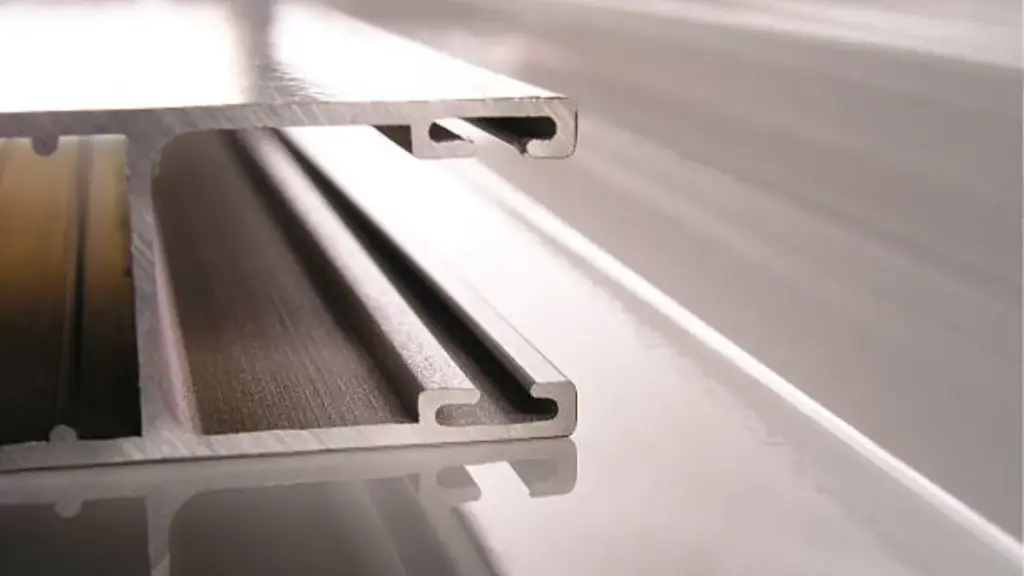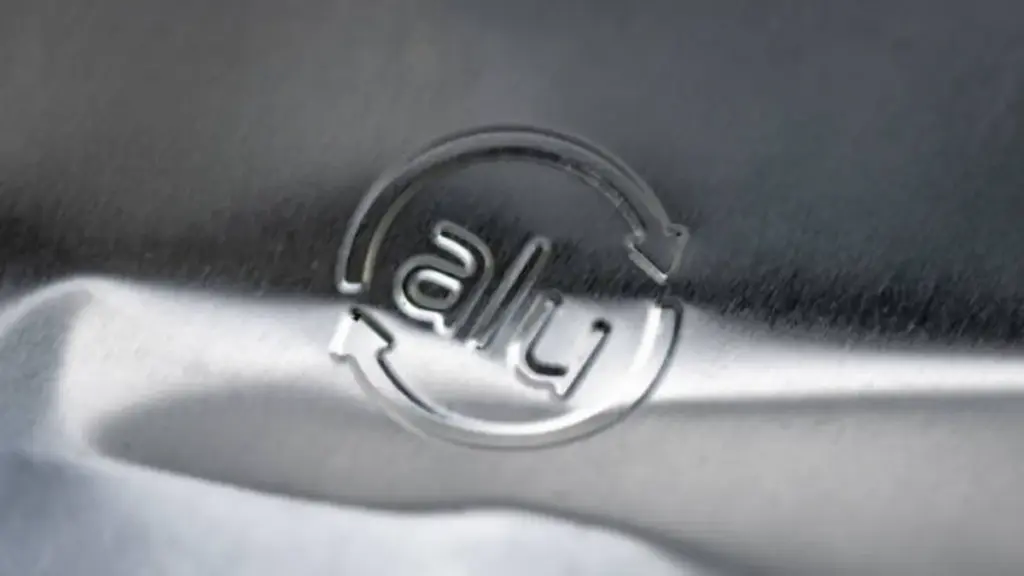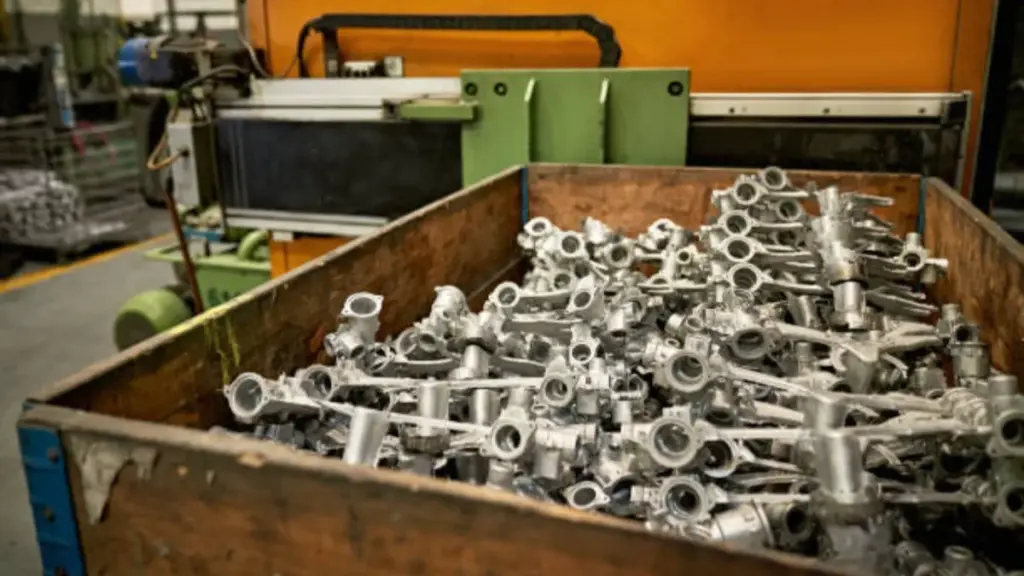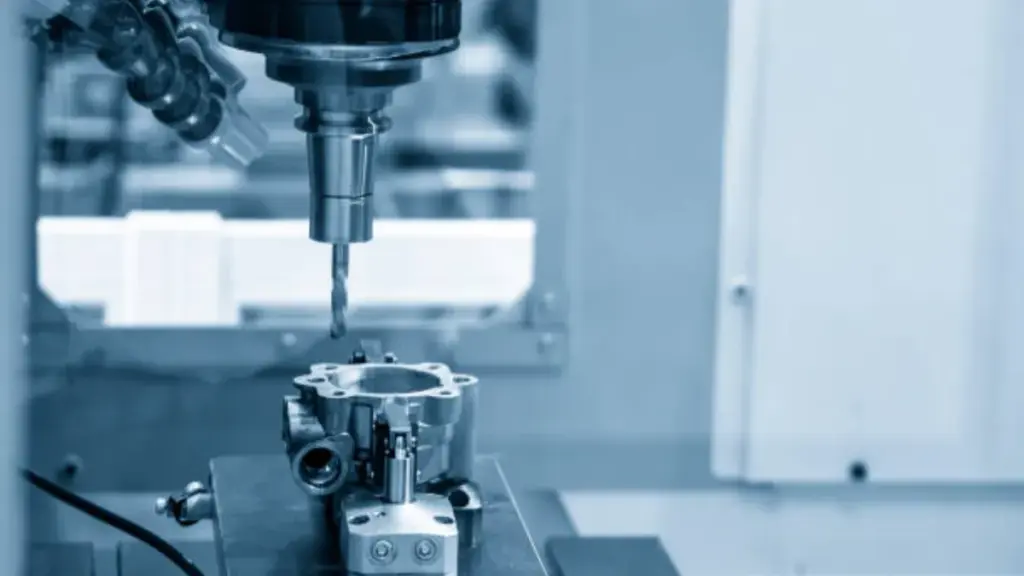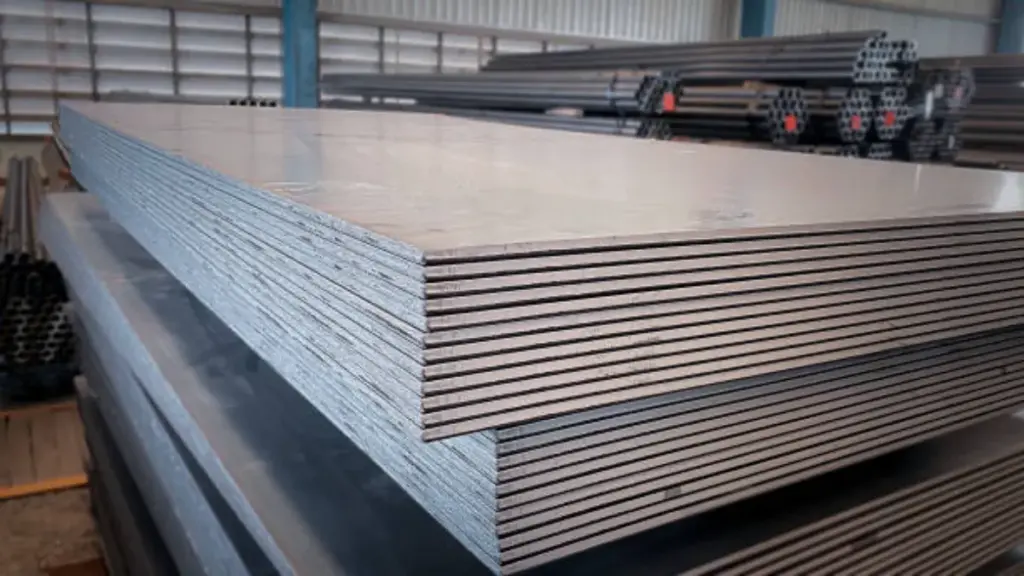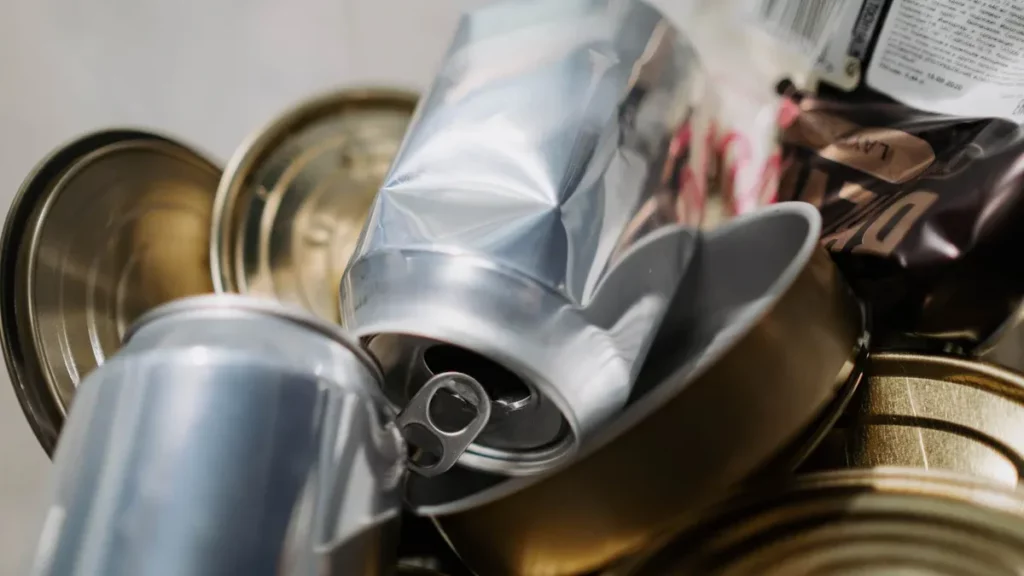
Das Casting dient als wichtiger Herstellungsprozess zur Erstellung präziser und langlebiger Metallkomponenten. Die Methode beinhaltet, geschmolzenes Metall unter hohem Druck in Formen zu zwingen, Gewährleistung einer konsequenten Qualität und komplizierten Designs. Die Rezyklierbarkeit ist aufgrund wachsender Umweltprobleme und des Vorstoßes nach Nachhaltigkeit zu einem Eckpfeiler der modernen Fertigung geworden.
Aluminium verfügt über eine Recyclingrate von fast 75%, Während Zinklegierungen energieeffiziente Recyclingprozesse anbieten. Diese Materialien tragen erheblich zu nachhaltigen Gusspraktiken bei, Minimierung von Abfall und Förderung einer kreisförmigen Wirtschaftlichkeit.
Nachhaltiges Würfel: Recyclingabilität von Aluminium vs. Zinklegierungen
Aluminium- und Zinklegierungen verstehen
Chemische Zusammensetzung und Eigenschaften von Aluminiumlegierungen
Aluminiumlegierungen bestehen hauptsächlich aus Aluminium in Kombination mit Elementen wie Silizium, Magnesium, und Kupfer. Silizium verbessert die Flüssigkeit während des Gießens. Magnesium verbessert die Korrosionsbeständigkeit. Kupfer erhöht die Stärke. Aluminiumlegierungen weisen leichte Eigenschaften und hervorragende Wärmeleitfähigkeit auf. Hohe Korrosionsbeständigkeit macht Aluminium für verschiedene Anwendungen geeignet.
Chemische Zusammensetzung und Eigenschaften von Zinklegierungen
Zinklegierungen enthalten Zink als Grundmetall, oft gemischt mit Aluminium, Magnesium, und Kupfer. Aluminium verbessert Stärke und Härte. Magnesium verbessert die Gussfähigkeit und verringert die Sprödigkeit. Kupfer trägt zum Verschleißfestigkeit bei. Zinklegierungen demonstrieren Stärke mit hoher Aufprall, Überlegene thermische Leitfähigkeit, und erweiterte Werkzeuglebensdauer in den Gussprozessen.
Vergleichende Analyse der physikalischen und mechanischen Eigenschaften
- Stärke: Zinklegierungen sind 2.5 mal stärker als Aluminiumlegierungen.
- Dichte: Zinklegierungen haben im Vergleich zu Aluminiumlegierungen eine höhere Dichte.
- Wärmeleitfähigkeit: Zink bietet eine überlegene thermische Leitfähigkeit, Während Aluminium eine hervorragende Wärmeabteilung bietet.
- Verarbeitbarkeit: Aluminiumlegierungen zeichnen sich in Bearbeitungsmerkmalen aus, sie ideal für komplizierte Designs machen.
- Kosteneffizienz: Zinklegierungen sind im Allgemeinen erschwinglicher als Aluminiumlegierungen.
Anwendungen beim Gießen
Automobilindustrieanwendungen
Aluminiumlegierungen dominieren Automobilanwendungen aufgrund ihrer leichten Natur. Reduziertes Gewicht verbessert die Kraftstoffeffizienz und die Fahrzeugleistung. Zinklegierungen tragen zu kleineren Komponenten bei, die hohe Festigkeit und Haltbarkeit erfordern. Zink-Würfel-Gussteile verbessern die Wirkungsfestigkeit in sicherheitskritischen Teilen.
Elektronik und Konsumgüter
Aluminiumlegierungen finden in elektronischen Gehäusen aufgrund ihrer thermischen Leitfähigkeit und Korrosionsbeständigkeit verwendet. Zinklegierungen bieten kostengünstige Lösungen für kleine Konsumgüter. Zincs hohe Stärke unterstützt komplizierte Designs in Geräten und dekorativen Gegenständen.
Luft- und Raumfahrt und industrielle Nutzung
Aluminiumlegierungen spielen aufgrund ihrer leichten Eigenschaften und Korrosionsbeständigkeit eine Schlüsselrolle bei Luft- und Raumfahrtanwendungen. Zinklegierungen zugute kommen industrielle Anwendungen, die Haltbarkeit und Schlagkraft erfordern. Die Gussfähigkeit von Zinc unterstützt komplexe Geometrien in Industriemaschinenkomponenten.
Recyclingprozesse für Aluminium- und Zinklegierungen
Aluminium -Recyclingprozess
Sammel- und Sortiermethoden
Das Recycling von Aluminium beginnt mit der Sammlung von Schrottmaterialien. Zu den Quellen gehören gebrauchte Getränkedosen, Automobilteile, und industrielle Abfälle. Sortierung spielt eine entscheidende Rolle bei der Gewährleistung materieller Reinheit. Fortgeschrittene Technologien wie Wirbelstromabschlüsse und Röntgenfluoreszenzsysteme helfen dabei, Aluminium von anderen Metallen zu identifizieren und zu trennen. Manuelle Inspektion ergänzt häufig automatisierte Systeme, um Verunreinigungen zu entfernen.
Schmelz- und Reinigungstechniken
Der Schmelzprozess transformiert Aluminium in einen geschmolzenen Zustand. Hocheffiziente Öfen, wie Dreh- oder Nachhallöfen, Reduzieren Sie den Energieverbrauch während dieses Schritts. Flüsse und Entgasmittel entfernen Verunreinigungen wie Oxide und Wasserstoffgas. Reibungsextrusion, eine jüngste Innovation, Angebote Verbesserte Energieeffizienz durch Betrieb bei niedrigeren Temperaturen und weniger Verarbeitungsschritten erforderlich. Das gereinigte Aluminium wird zur Wiederverwendung in der Fertigung in Barren gesteckt.
Herausforderungen und Einschränkungen beim Aluminiumrecycling
Aluminium -Recycling -Gesichtsherausforderungen im Zusammenhang mit Kontamination und Legierungskompatibilität. Gemischte Legierungen können den Remelting -Prozess erschweren, Beeinflussung der Qualität von recycelten Produkten. Die Reinigung von Aluminiumchips erfordert erhebliche Energie, und Optimierung von Flusszusammensetzungen bleibt ein Gebiet für Verbesserungen. Trotz dieser Herausforderungen, sekundäre Aluminiumlegierungen pflegen nahezu identische Qualität zu primären Materialien, Aluminium -Recycling zu einem Eckpfeiler nachhaltiger Würfelpraktiken machen.
Zinkrecyclingprozess
Sammel- und Sortiermethoden
Das Zinkrecycling beginnt mit dem Sammeln von Schrott aus Die-Cast-Komponenten, verzinkter Stahl, und industrielle Rückstände. Sortierung sorgt für die Trennung von Zink von anderen Metallen und Unreinheiten. Techniken wie magnetische Trennung und Dichtebasis verbessern die Effizienz dieses Schritts. Die ordnungsgemäße Sortierung verbessert die Qualität von recycelten Zinklegierungen.
Schmelz- und Reinigungstechniken
Der Schmelzprozess für Zink umfasst das Erhitzen des Schrottes in spezialisierten Öfen. Der niedrigere Schmelzpunkt von Zink im Vergleich zu Aluminium trägt zum energieeffizienten Recycling bei. Während der Reinigung, Flüsse entfernen unerwünschte Elemente, Gewährleistung von hochwertigem recyceltem Zink. Der geschmolzene Zink wird dann in Platten oder Barren gegossen, Bereit zur Wiederverwendung in Die Casting -Anwendungen.
Herausforderungen und Einschränkungen beim Zinkrecycling
Zinkrecycling begegnet Hindernisse wie das Vorhandensein von Beschichtungen und gemischten Materialien. Das Entfernen dieser Verunreinigungen erfordert eine zusätzliche Verarbeitung, was die Kosten erhöhen kann. Trotz dieser Hürden, Zink -Würfelguss erzeugt minimale Abfälle, Da der meisten Prozessschrott recycelt wird. Die energieeffiziente Natur des Recyclings von Zink unterstützt seine Rolle beim Casting nachhaltiger Würfel weiter.
Vergleichende Analyse der Recyclierbarkeit
Energieeffizienz beim Recycling
Energiebedarf für Aluminiumrecycling
Das Recycling von Aluminium verbraucht im Vergleich zur Primärproduktion deutlich weniger Energie. Die primäre Aluminiumproduktion erfordert ungefähr 45 KWH pro Kilogramm. Recycling von Aluminiumschrott, Jedoch, verwendet nur über 2.8 KWH pro Kilogramm. Diese Energieverringerung bedeutet fast 95% Ersparnisse im Energieverbrauch. Der effiziente Energieverbrauch macht Aluminiumrecycling Ein wesentlicher Beitrag zu nachhaltigen Gusspraktiken. Die sekundäre Aluminiumproduktion verringert auch die Abhängigkeit von energieintensiver Rohmaterialextraktion.
Energiebedarf für das Zinkrecycling
Das Zinkrecycling zeigt eine hohe Energieeffizienz aufgrund seines niedrigeren Schmelzpunkts. Die für das Recycling -Zink erforderliche Energie ist wesentlich geringer als die für Aluminium. Der Schmelzprozess von Zink verbraucht weniger Kraftstoff und arbeitet bei niedrigeren Temperaturen. Diese charakteristische positioniert Zink als energieeffizientes Material in den Waldgießanwendungen. Der energieeffiziente Recyclingprozess unterstützt die breiteren Ziele der Nachhaltigkeit im Fertigung.
Umweltauswirkungen
CO2 -Fußabdruck des Aluminiumrecyclings
Das Recycling von Aluminium reduziert die Kohlenstoffemissionen signifikant. Die primäre Aluminiumproduktion emittiert ungefähr 12 Kilogramm CO2 pro Kilogramm. Das Recycling von Aluminiumschrott reduziert diese Zahl auf gerade 0.6 Kilogramm CO2 pro Kilogramm. Diese Reduzierung repräsentiert a 95% Abnahme der Kohlenstoffemissionen. Die Verwendung von recyceltem Aluminium beim Gießen minimiert die Umweltauswirkungen und speichert natürliche Ressourcen. Die hohe Recyclingbarkeit von Aluminium richtet sich an nachhaltige Fertigungsziele.
CO2 -Fußabdruck des Zinkrecyclings
Das Zinkrecycling bietet auch Umweltvorteile durch Senkung der Kohlenstoffemissionen. Der geringere Energiebedarf für das Zinkrecycling trägt zu verringerten Treibhausgasemissionen bei. Zink -Würfelguss erzeugt minimale Abfälle, wobei die meisten Schrott recycelt werden. Der Vorgang vermeidet die Notwendigkeit einer umfangreichen Rohstoff -Extraktion. Dieser Ansatz unterstützt eine kreisförmige Wirtschaft und reduziert den allgemeinen ökologischen Fußabdruck.
Wirtschaftliche Lebensfähigkeit
Kostenwirksamkeit des Aluminiumrecyclings
Das Recycling von Aluminium erweist sich aufgrund seiner Energieeffizienz und hohen Wiederherstellungsraten als kostengünstig. Die Fähigkeit zur Wiederverwendung von Aluminiumschrott verringert die Nachfrage nach teuren Rohstoffen. Sekundäre Aluminiumlegierungen halten die Qualität aufrecht, vergleichbar mit Primärmaterialien vergleichbar. Dies gewährleistet Kosteneinsparungen, ohne die Leistung zu beeinträchtigen. Die wirtschaftlichen Vorteile machen das Recycling von Aluminium zu einer praktischen Entscheidung für nachhaltiges Würfel -Casting.
Kosteneffizienz des Zinkrecyclings
Zinkrecycling bietet Erschwinglichkeit aufgrund seiner niedrigeren Verarbeitungskosten. Der reduzierte Energieverbrauch während des Recyclings senkt die Betriebskosten. Der niedrigere Marktpreis von Zinc im Vergleich zu Aluminium erhöht die Kosteneffizienz. Die Haltbarkeit und Recyclingfähigkeit von Zinklegierungen verlängern ihren wirtschaftlichen Wert weiter. Diese Faktoren machen das Recycling von Zink zu einer attraktiven Option für budgetbewusste Herstellungsprojekte.
Vorteile der Verwendung von recycelten Legierungen im Würfel -Casting

Nachhaltigkeitsvorteile
Verringerung der Rohstofffunktion
Recycelte Legierungen verringern die Notwendigkeit, jungfräuliche Materialien zu extrahieren. Aluminiumrecycling erfordert nur 5% der Energie Wird zur Herstellung von Virgin -Aluminium aus Bauxiterz verwendet. Diese Energieeffizienz minimiert die Abhängigkeit von nicht erneuerbaren Ressourcen. Das Zinkrecycling verringert auch die Nachfrage nach primärer Zinkproduktion, Dies beinhaltet energieintensive Prozesse. Durch die Wahl recycelter Legierungen, Hersteller erhalten natürliche Ressourcen und niedrigere Betriebsenergiekosten.
Der Gussprozess erzeugt minimale Abfälle bei der Verwendung recycelter Materialien. Aluminium- und Zinklegierungen haben eine hohe Rezyklinabilität, Sicherstellen, dass Schrott und Rückstände wieder in den Produktionszyklus eintreten. Dieser Ansatz unterstützt die Ressourcenkonservierung und verringert gleichzeitig die Umweltauswirkungen des Fertigungsbetriebs.
Beitrag zur kreisförmigen Wirtschaftlichkeit
Recycelte Legierungen spielen eine wichtige Rolle bei der Förderung einer kreisförmigen Wirtschaftlichkeit. Die kontinuierliche Wiederverwendung von Aluminium- und Zinklegierungen reduziert die Erzeugung der Abfälle. Das Recycling von Aluminium schneidet die Treibhausgasemissionen um bis zu bis zu bis zu 95%, Es ist eine nachhaltige Wahl für das Casting. Das Zinkrecycling unterstützt auch die Nachhaltigkeit, indem sie den Energieverbrauch senkt und Abfall minimiert.
Das Casting mit recycelten Legierungen stimmt mit den globalen Bemühungen zur Bekämpfung des Klimawandels überein. Branchen, die nachhaltige Casting-Praktiken einführen, tragen zu langfristigen Umweltzielen bei. Die Verwendung von recycelten Aluminium- und Zinklegierungen verbessert die Ressourceneffizienz und unterstützt umweltfreundliche Fertigung.
Leistung und Qualität
Aufrechterhaltung der Integrität der Legierung nach dem Recycling
Recycelte Legierungen behalten ihre wesentlichen Eigenschaften nach der Verarbeitung bei. Sekundäre Aluminiumlegierungen weisen eine nahezu identische Qualität mit primären Materialien auf. Dies sorgt dafür. Zinklegierungen behalten auch ihre Stärke bei, Haltbarkeit, und thermische Leitfähigkeit nach dem Recycling.
Die Präzision der Gussprozesse stellt eine konsistente Qualität in Komponenten aus recycelten Legierungen sicher. Hersteller erzielen eine zuverlässige Leistung, ohne die Materialintegrität zu beeinträchtigen. Recycelte Aluminium- und Zinklegierungen erfüllen die strengen Anforderungen von Branchen wie Automobile, Luft- und Raumfahrt, und Elektronik.
Verbesserte Eigenschaften in recycelten Legierungen
Recyclingprozesse verbessern häufig die Eigenschaften von Aluminium- und Zinklegierungen. Erweiterte Reinigungstechniken verbessern die Qualität von recycelten Materialien. Reibungsextrusion, Zum Beispiel, Erhöht die Energieeffizienz und verringert Verunreinigungen bei recyceltem Aluminium. Diese Innovationen führen zu Legierungen mit überlegenen Merkmalen für das Casting.
Zinklegierungen profitieren von energieeffizienten Recyclingmethoden, die ihre mechanischen Eigenschaften bewahren. Der niedrigere Schmelzpunkt von Zink reduziert die thermische Belastung während der Verarbeitung. Dies stellt sicher, dass recycelte Zinklegierungen für komplizierte Designs und hochfeste Anwendungen geeignet sind. Recycelte Legierungen bieten kostengünstige Lösungen, ohne die Leistung oder Haltbarkeit zu beeinträchtigen.
Die Recyclingbarkeit hat aufgrund ihrer Rolle bei der Verringerung des Energieverbrauchs und der Umweltauswirkungen eine immense Bedeutung für das Casting. Aluminiumlegierungen, mit unendlicher Recyclabilität, Ressourcen sparen und Unterstützen Sie die kreisförmige Wirtschaftlichkeit. Zinklegierungen, bekannt für energieeffizientes Recycling, Minimieren Sie Abfall- und Betriebskosten. Beide Materialien verbessern die nachhaltige Herstellung, indem sie die Treibhausgasemissionen senken und die Erhaltung der Ressourcen fördern.

